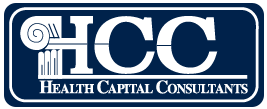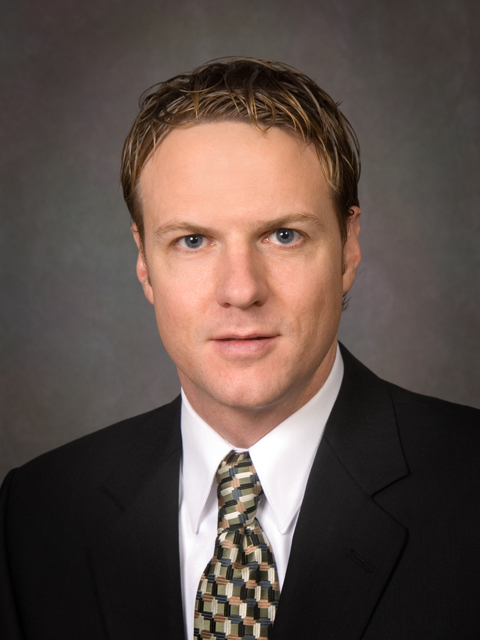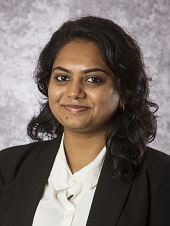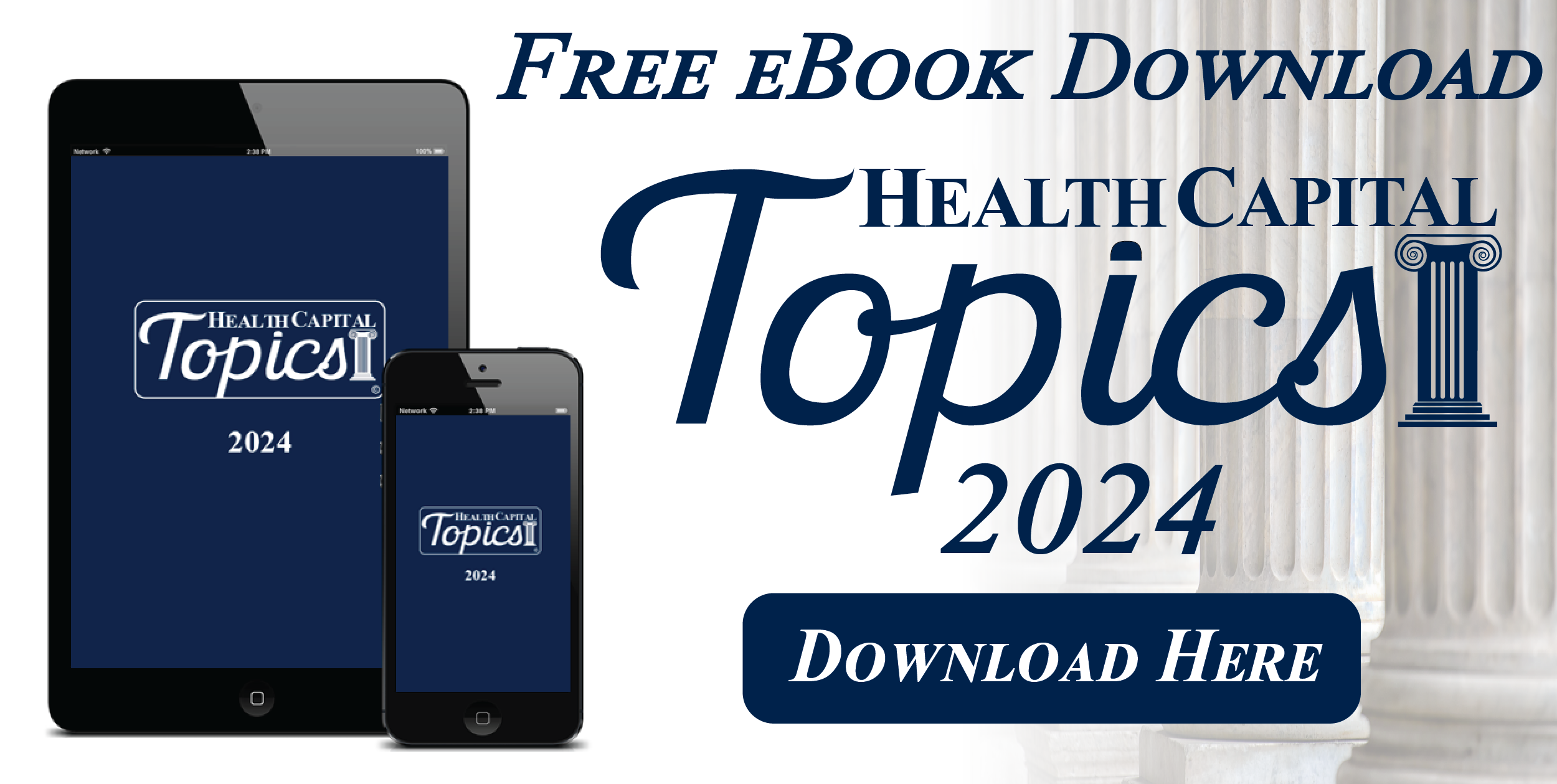Cardiovascular disease (CVD) is the leading cause of death in the U.S., accounting for one out of every five deaths.1 Approximately 48.6% of American adults have at least one form of CVD, and the prevalence increases with age in both male and females.2 It is estimated that the average annual direct and indirect costs of CVD in the U.S. totaled $422.3 billion from 2019 to 2020,3 and by 2035, costs associated with CVD are expected to be in the trillions.4 Treatment of CVD and the heart is performed by a number of physician specialties, including internal medicine physicians specializing in cardiology, cardiovascular surgeons, and vascular surgeons. This first installment in a five-part series on the valuation of cardiovascular services provides a brief overview of the myriad cardiovascular specialties.
Surgical treatment of cardiovascular disorders, including minimally invasive surgeries, typically fall under the domain of thoracic surgeons, while cardiologists primarily treat cardiovascular conditions through medication.5 However, the cardiothoracic surgeon is a part of a more holistic heart health team, which includes a patient’s primary care physician, cardiologist, and cardiac rehabilitation team working to help the patient to recover from heart surgery.6 Additionally, cardiothoracic surgeons and cardiologists may collaborate with physicians in other, related specialties, such as vascular surgeons, in order to provide comprehensive cardiac care to a patient.7
Cardiologists
Cardiologists typically focus on diagnosis, medical management (including the use of medications), and prevention of cardiovascular disease (CVD), rather than on surgical operations on the heart.8 Additionally, a cardiologist may play a major role in a patient’s cardiac rehabilitation program, which can help a patient to recover from heart surgery and prevent future heart problems.9
To become board certified in the treatment of CVD, a physician must first receive certification in internal medicine from the American Board of Internal Medicine (ABIM).10 To earn this certification, the applicant must first complete a three-year internal medicine residency, which requires residents to master a broad range of clinical disorders, treatments, and preventive measures in a variety of clinical settings, including inpatient, critical, and ambulatory care.11 Once certified as an internist, the physician must then complete a three-year graduate medical education fellowship in CVD.12 These programs require fellows to demonstrate an ability to prevent, evaluate, and manage various cardiovascular conditions, as well as display competence in the performance of various cardiovascular procedures.13
The ABIM offers four subspecialties to those physicians who are already certified in CVD: (1) Advanced Heart Failure and Transplant Cardiology; (2) Clinical Cardiac Electrophysiology; (3) Interventional Cardiology; and, (4) Adult Congenital Heart Disease.14 According to the Accreditation Council for Graduate Medical Education (ACGME), fellowships in these subspecialties of CVD provide further training in the following areas:
Advanced Heart Failure and Transplant Cardiology – Focuses on its titular subjects of heart failure and heart transplants;
15
Clinical Cardiac Electrophysiology – Focuses on the diagnosis and treatment of arrhythmias, including the use of implantable electronic devices;
16
Interventional Cardiology – Focuses on techniques which improve coronary circulation and treat structural heart diseases;
17 and
Adult Congenital Heart Disease – Focuses on the treatment of adult patients with congenital defects in the structures of the heart or blood vessels, often providing care over a long period of time.
18
Among other requirements, each of these four certifications requires the successful completion of an accredited fellowship in their respective fields.19
Cardiovascular Surgeons
The Society of Thoracic Surgeons (STS) defines a cardiovascular surgeon (also known as a cardiothoracic surgeon, cardiac surgeon, or thoracic surgeon) as “…a medical doctor who specializes in surgical procedures of the heart, lungs, esophagus, and other organs in the chest.”20 The STS notes that cardiovascular surgeons who focus on certain areas within thoracic surgery may be referred to by other names. For example, a surgeon who focuses on the heart and major blood vessels is typically referred to as a cardiac or cardiovascular surgeon, but the STS has stated that the terms thoracic surgeon and cardiothoracic surgeon are interchangeable.21
Procedures provided by cardiovascular surgeons include:
Coronary artery bypass grafting (CABG), also called heart bypass, surgery;
Valve repair or replacement;
Repair of thoracic aneurysms;
Minimal access cardiac surgery;
Ventricular remodeling; and,
In order to be certified as a cardiovascular surgeon by the American Board of Thoracic Surgery (ABTS), a candidate for certification must complete a residency in thoracic surgery.23 Completion of a residency in thoracic surgery requires residents to demonstrate competence in several areas, e.g.: (1) critical care of both trauma patients and patients with thoracic and cardiovascular surgical disorders (with or without operative intervention); (2) management of thoracic and cardiovascular patients before and after operation; and (3) utilization and interpretation of diagnostic procedures.24
Notably, traditional certification in thoracic surgery requires prior certification in either general surgery or vascular surgery, for a total of seven years in residency training (i.e., two years of thoracic surgery and five years of either general or vascular surgery).25 If the candidate for thoracic surgery certification does not have prior certification in general surgery or vascular surgery, the candidate may enter a seven-year joint program in order to simultaneously complete residencies in both general surgery and thoracic surgery.26 As a third alternative, some programs offer integrated programs that require only six years of training (two to three of which focus on core surgical education), but only offer certification in thoracic surgery (i.e., candidates would not be qualified for additional certification in general surgery).27
Upon completion of their thoracic surgery certification, physicians may elect to pursue subspecialty certification in congenital cardiac surgery (i.e., surgical treatment of heart problems that are present at birth), which requires an additional fellowship year focusing on congenital defects of the heart and major blood vessels, such as septal defects (holes in the heart).28 Although thoracic surgeons may focus on various specific areas within the specialty, such sub-specialization may not be accompanied by additional ABTS certifications.
Vascular Surgeons
While cardiologists and cardiovascular surgeons provide treatment for the heart itself, vascular surgeons treat disorders of the arteries, veins, and lymphatic system.29 These physicians often perform balloon angioplasties, stenting, and bypass surgeries.30 Some of the more common services that vascular surgeons furnish include stroke prevention, revascularization in order to treat poor circulation, and management of aneurysms.31 In some cases, vascular surgeons may work in collaboration with interventional cardiologists,32 which may lead to improved patient outcomes.
Vascular surgeons may follow three different educational paths to become eligible for board certification in vascular surgery. Traditionally, physicians complete a five-year residency in general surgery, with an additional two years of training specifically tailored to vascular surgery techniques independent of the general surgery residency program.33 Physicians embarking on this training pathway become eligible to earn certification in both general surgery and vascular surgery.34 In addition to this traditional pathway, physicians may complete two alternative pathways to become eligible for board certification in vascular surgery. First, physicians may complete four years of residency in an early specialization program in general surgery, with two years of vascular surgery training proceeding the initial residency at the same institution.35 Similar to the traditional pathway, physicians embarking on this training pathway become eligible to earn certification in both general surgery and vascular surgery.36 Second, physicians may participate in a five-year integrated program starting upon medical school graduation, with some of that time devoted to general surgery training and the rest devoted to vascular surgery training.37 Unlike the other pathways to vascular surgery board certification eligibility, the integrated pathway only allows residents to achieve board certification in vascular surgery.38
Conclusion
The market for cardiovascular services may experience increasing demand in the coming years, due to an aging U.S. population, which may increase the number of people seeking these services. As demand increases, the supply of cardiovascular providers will likely decrease, due to an imbalance between the number of these physicians who are moving toward retirement and the number of residents that are entering these fields. The next installment in this five-part series will explore the competitive environment in which cardiovascular providers operate.
“Heart Disease Facts” Centers for Disease Control and Prevention, https://www.cdc.gov/heart-disease/data-research/facts-stats/?CDC_AAref_Val=https://www.cdc.gov/heartdisease/facts.htm (Accessed 12/24/24).
“2024 Heart Disease and Stroke Statistics: A Report of US and Global Data From the American Heart Association” By Seth S. Martin, et al., Circulation, available at: https://www.ahajournals.org/doi/pdf/10.1161/CIR.0000000000001209?ref=futurecrunch.com https://www.ahajournals.org/doi/10.1161/CIR.0000000000001123 (Accessed 12/24/24), Chart 14-1.
“Obesity Paradox in Cardiovascular Disease: Where Do We Stand?” By Salvatore Carbone et al., National Library of Medicine, National Institute of Health, https://www.ncbi.nlm.nih.gov/pmc/articles/PMC6503652/#:~:text=Obesity%20is%20associated%20with%20an,hemodynamics%20and%20alters%20heart%20structure (Accessed 12/24/24).
“What is a Cardiothoracic Surgeon?” The Society of Thoracic Surgeons, https://ctsurgerypatients.org/what-is-a-cardiothoracic-surgeon#what-is-a-cardiothoracic-surgeon (Accessed 12/15/23).
“Cardiologists” Washington University School of Medicine in St. Louis, https://wuphysicians.wustl.edu/medical-services/specialties/cardiology (Accessed 12/15/23).
The Society of Thoracic Surgeons-The Patient Guide to Heart, Lung, and Esophageal Surgery, 2023.
“What is a Cardiologist?” Texas Heart Institute, https://www.texasheart.org/heart-health/heart-information-center/topics/what-is-a-cardiologist/ (Accessed 12/18/23). “What is Cardiac Rehabilitation?” National Heart, Lung, and Blood Institute, 2023, https://www.heart.org/en/health-topics/cardiac-rehab/what-is-cardiac-rehabilitation (Accessed 12/18/23).
“Cardiovascular Disease Policies” American Board of Internal Medicine, https://www.abim.org/certification/policies/internal-medicine-subspecialty-policies/cardiovascular-disease.aspx (Accessed 12/18/23).
“Internal Medicine Policies” American Board of Internal Medicine, https://www.abim.org/certification/policies/internal-medicine-subspecialty-policies/internal-medicine.aspx (Accessed 12/18/23); “ACGME Program Requirements for Graduate Medical Education in Internal Medicine” Accreditation Council for Graduate Medical Education, July 1, 2023, https://www.acgme.org/globalassets/pfassets/programrequirements/140_internalmedicine_2023.pdf (Accessed 12/18/23), p. 18-19.
American Board of Internal Medicine, https://www.abim.org/certification/policies/internal-medicine-subspecialty-policies/cardiovascular-disease.aspx (Accessed 12/18/23).
“ACGME Program Requirements for Graduate Medical Education in Cardiovascular Disease (Internal Medicine)” Accreditation Council for Graduate Medical Education, July 1, 2023, https://www.acgme.org/globalassets/pfassets/reviewandcomment/rc/141_cardiovasculardisease_rc_012023.pdf (Accessed 12/18/23).
“Policies and Procedures for Certification” American Board of Internal Medicine, September 2023, https://www.abim.org/~/media/ABIM%20Public/Files/pdf/publications/certification-guides/policies-and-procedures.pdf (Accessed 12/18/23), p. 7.
“ACGME Program Requirements for Graduate Medical Education in Advanced Heart Failure and Transplant Cardiology (Subspecialty of Internal Medicine)” Accreditation Council for Graduate Medical Education, July 1, 2023, https://www.acgme.org/globalassets/pfassets/programrequirements/159_advancedheartfailuretransplantcardiology_2023.pdf (Accessed 12/18/23), p. 1.
“ACGME Program Requirements for Graduate Medical Education in Clinical Cardiac Electrophysiology (Subspecialty of Internal Medicine)” Accreditation Council for Graduate Medical Education, July 1, 2023, https://www.acgme.org/Portals/0/PFAssets/ProgramRequirements/154_ClinicalCardiacElectrophysiology_2019.pdf?ver=2019-06-25-142057-797 (Accessed 12/18/23), p. 1.
“ACGME Program Requirements for Graduate Medical Education in Interventional Cardiology (Subspecialty of Internal Medicine)” Accreditation Council for Graduate Medical Education, July 1, 2023, https://www.acgme.org/Portals/0/PFAssets/ProgramRequirements/152_InterventionalCardiology_2019_TCC.pdf (Accessed 12/18/23), p. 1.
“ACGME Program Requirements for Graduate Medical Education in Adult Congenital Heart Disease (Subspecialty of Internal Medicine)” Accreditation Council for Graduate Medical Education, July 1, 2023, https://www.acgme.org/Portals/0/PFAssets/ProgramRequirements/153_AdultCongenitalHeartDisease_2019.pdf?ver=2019-06-25-122714-137 (Accessed 12/18/23), p. 1.
“Policies and Procedures for Certification” American Board of Internal Medicine, September 2023, https://www.abim.org/~/media/ABIM%20Public/Files/pdf/publications/certification-guides/policies-and-procedures.pdf (Accessed 12/18/23), p. 7.
The Society of Thoracic Surgeons, https://ctsurgerypatients.org/what-is-a-cardiothoracic-surgeon#what-is-a-cardiothoracic-surgeon (Accessed 12/18/23).
“Pathways to Certification” American Board of Thoracic Surgery, https://www.abts.org/ABTS/CertificationWebPages/Pathways%20to%20Certification.aspx (Accessed 12/18/23).
“ACGME Program Requirements for Graduate Medical Education in Thoracic Surgery (Integrated)” Accreditation Council for Graduate Medical Education, July 1, 2022, https://www.acgme.org/globalassets/pfassets/programrequirements/461_thoracicsurgeryintegrated_2022.pdf (Accessed 12/18/23), p. 25.
Ibid; “ACGME Program Requirements for Graduate Medical Education in General Surgery” Accreditation Council for Graduate Medical Education, July 1, 2022, https://www.acgme.org/globalassets/pfassets/programrequirements/440_generalsurgery_2023.pdf (Accessed 12/18/23), p. 1; “ACGME Program Requirements for Graduate Medical Education in Vascular Surgery” Accreditation Council for Graduate Medical Education, July 1, 2022, https://www.acgme.org/globalassets/pfassets/programrequirements/451_vascularsurgeryintegrated_2022_tcc.pdf (Accessed 12/18/23), p. 1.
“ACGME Program Requirements for Graduate Medical Education in Thoracic Surgery (Integrated)” Accreditation Council for Graduate Medical Education, July 1, 2022, https://www.acgme.org/globalassets/pfassets/programrequirements/461_thoracicsurgeryintegrated_2022.pdf (Accessed 12/18/23), p. 1-3.
“Congenital Heart Defects” National Heart, Lung, and Blood Institute, March 24, 2022, https://www.nhlbi.nih.gov/health-topics/congenital-heart-defects#Types (Accessed 3/30/20); “ACGME Program Requirements for Graduate Medical Education in Congenital Cardiac Surgery (Subspecialty of Thoracic Surgery)” Accreditation Council for Graduate Medical Education, July 1, 2022, https://www.acgme.org/globalassets/pfassets/programrequirements/466_congenitalcardiacsurgery_2023.pdf (Accessed 12/18/23), p. 1; “American Board of Thoracic Surgery” American Board of Medical Specialties, https://www.abms.org/board/american-board-of-thoracic-surgery/(Accessed 12/18/23).
“A Guide to Surgical Specialists” American College of Surgeons, https://www.facs.org/education/patient-education/patient-resources/specialists#vasc (Accessed 12/15/23).
“Angioplasty Treatments - Heart & Vascular Center” St. Vincent’s Medical Center, 2018, https://web.archive.org/web/20170712033236/https://www.stvincents.org/Medical-Services/Heart-Vascular/treatment-surgical/angioplasty (Accessed 12/15/23).
American College of Surgeons, https://www.facs.org/education/patient-education/patient-resources/specialists#vasc (Accessed 12/15/23).
“Conversations with Experts: Spencer King and Christopher White on Peripheral Interventions” American College of Cardiology, October 4, 2013, https://www.acc.org/latest-in-cardiology/articles/2013/10/04/15/58/conversations-with-experts-spencer-king-and-christopher-white-on-peripheral-interventions (Accessed 12/15/23).
“Vascular Surgery Training Pathways” Society for Vascular Surgery, https://vascular.org/career-tools-training/vascular-training-programs/vascular-surgery-training-pathways (Accessed 12/15/23); “Training Pathways – Vascular Surgery” The American Board of Surgery, 2018, http://www.absurgery.org/default.jsp?certvsqe_primarycert (Accessed 12/15/23).
Society for Vascular Surgery, https://vascular.org/career-tools-training/vascular-training-programs/vascular-surgery-training-pathways (Accessed 12/15/23).
Ibid; The American Board of Surgery, http://www.absurgery.org/default.jsp?certvsqe_primarycert (Accessed 12/15/23); “ACGME Program Requirements for Graduate Medical Education in Vascular Surgery” Accreditation Council for Graduate Medical Education, July 1, 2019, https://www.acgme.org/Portals/0/PFAssets/ProgramRequirements/451_VascularSurgeryIntegrated_2019.pdf?ver=2019-06-19-133350-287 (Accessed 12/15/23), p. 10-11.
Society for Vascular Surgery, https://vascular.org/career-tools-training/vascular-training-programs/vascular-surgery-training-pathways (Accessed 12/15/23).
Ibid; The American Board of Surgery, 2018, http://www.absurgery.org/default.jsp?certvsqe_primarycert (Accessed 12/15/23); Accreditation Council for Graduate Medical Education, 2022, p. 60.
Society for Vascular Surgery, https://vascular.org/career-tools-training/vascular-training-programs/vascular-surgery-training-pathways (Accessed 12/15/23).





